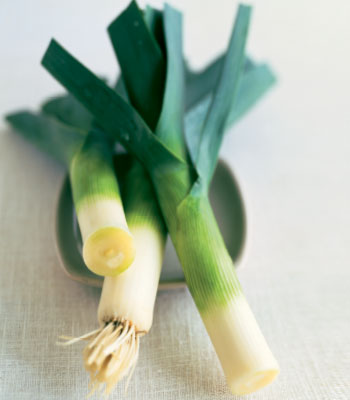Fixing a leek
This article was originally published in February 2015

The leek is a sweet and tender member of the onion family that dates back through several millennia, even appearing in four recipes in one of the world’s earliest cookbooks. While the ancient Egyptians cultivated them for size, today they are beloved for their mild flavor and delicate melting qualities when added to soups, egg dishes or baked in tarts.
The trickiest part of cooking with leeks is cleaning them, as their thin layers tend to catch and trap soil as they grow taller in the field. Trim off the bottom inch of the white part, along with the attached roots. Slice the remaining leek lengthwise and rinse them under running water, gently fanning the layers so the water can wash away trapped sand and soil.
Leeks are high in vitamin K, copper, iron and manganese, and include a broad variety of antioxidants and flavanoids like quercetin and kaempferol. If you’re looking for the potential health benefits of garlic and onions without the associated strong flavors, leeks might suit your needs.
Leeks with a diameter of 1 1/2 inches or less will have a more tender, less fibrous texture. Fresh leeks should be stored unwashed and untrimmed in the refrigerator, wrapped loosely in a plastic bag to retain moisture. Stored properly, they should stay fresh and usable for up to two weeks.
3 to try
Leek Tart
Not quite a quiche, this tart adds a delicious layer of gooey cheese to the mellow sautéed leek filling.
Get the recipe >>
Seasonal frittata
An easy brunch or supper dish, mild, tender leeks are the perfect complement to creamy eggs.
Get the recipe >>
Polenta with Leeks
Quick and incredibly comforting, you can use either instant polenta or traditional for this Italian dish.
Get the recipe >>
Meet the grower
Ralph de Vries cultivates more than 45 acres of leeks on his land near Mount Vernon, Wash., in the Skagit Valley. The farm has been certified organic since 1988.
